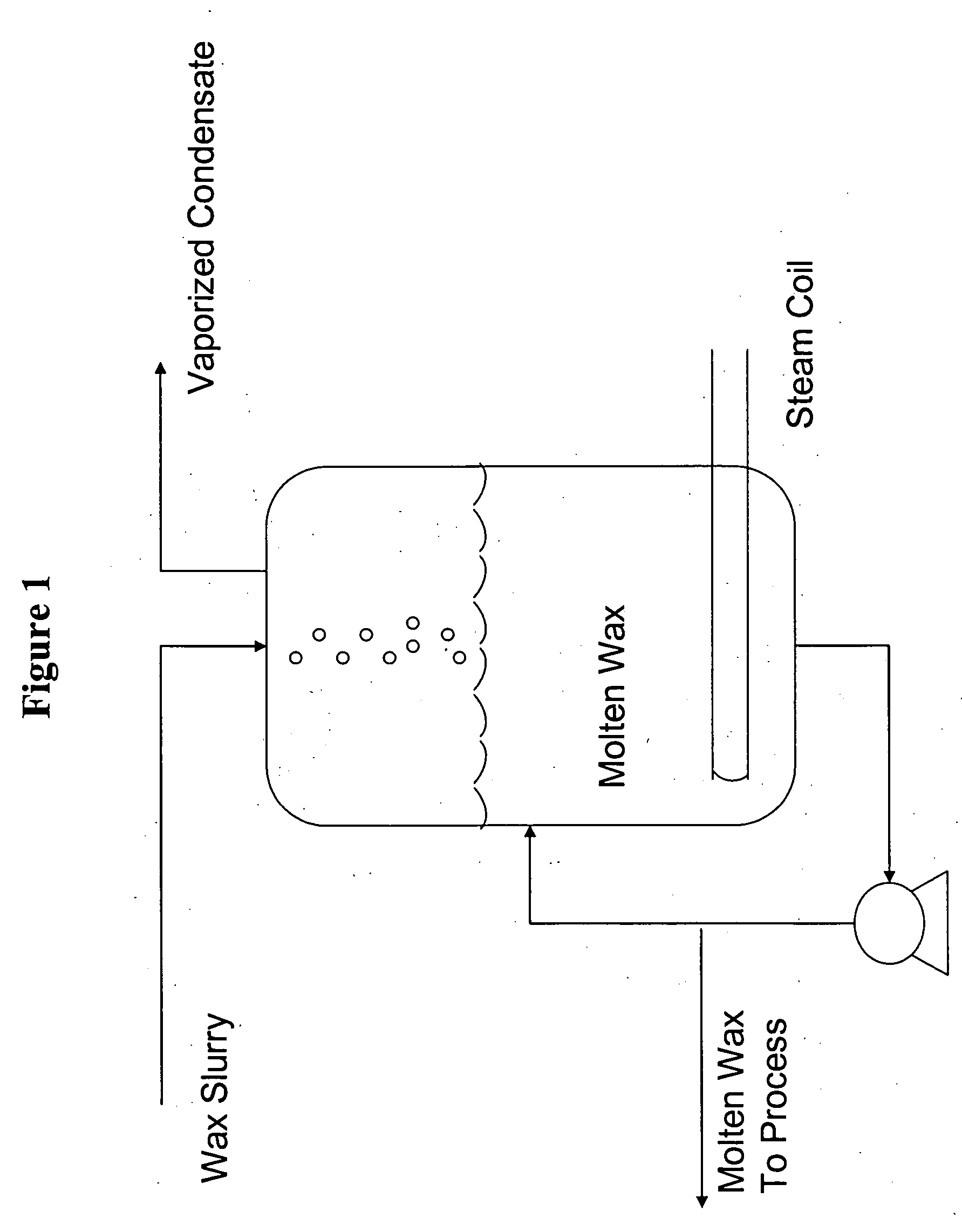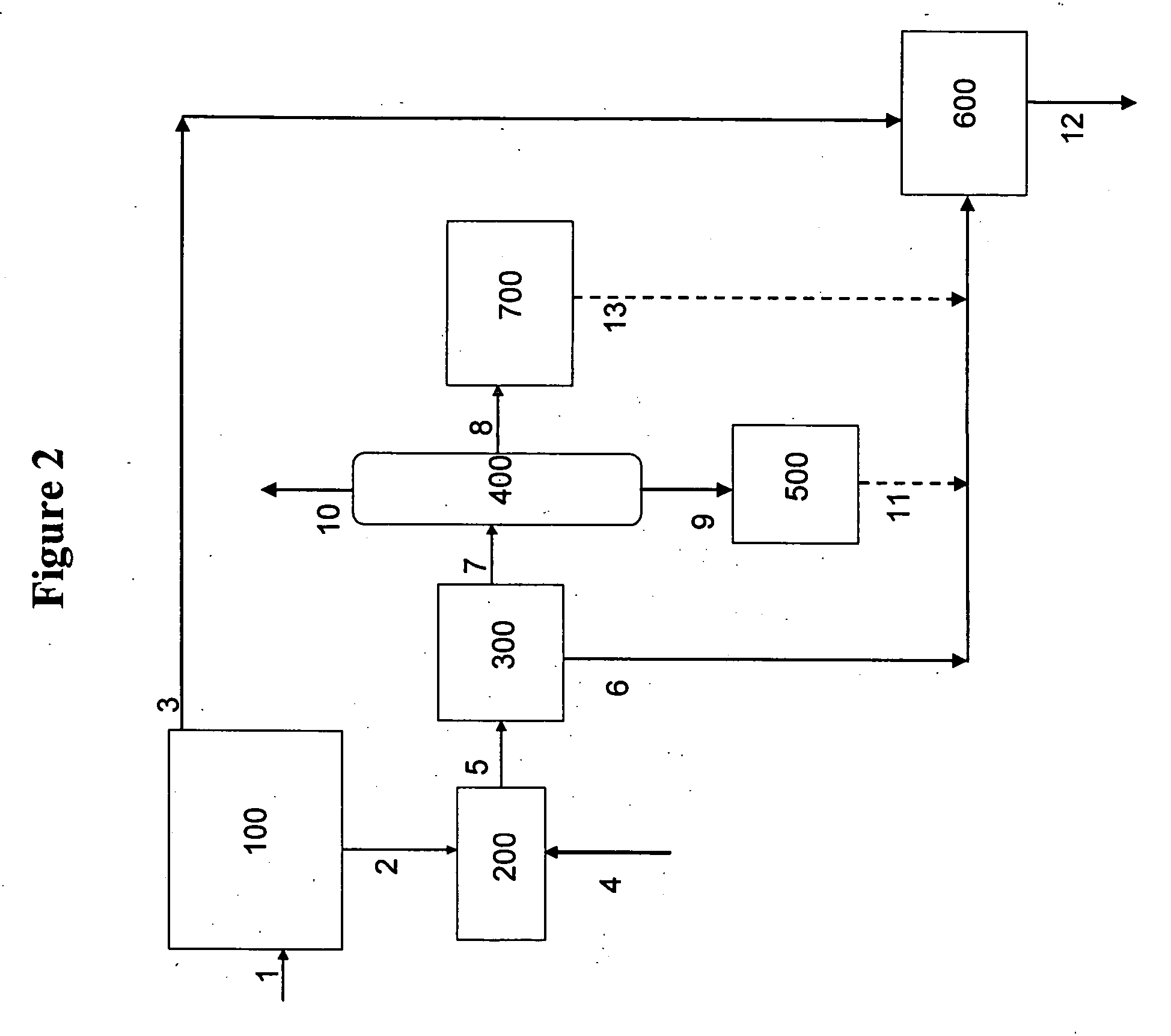Fischer-tropsch wax composition and method of transport
a technology of wax composition and wax, applied in the field of fischertropsch wax composition and transportation method, can solve the problems of difficult and expensive transportation, excessive solid wax formation, long and costly operation to melt solid wax, etc., and achieve the effect of efficient transportation
- Summary
- Abstract
- Description
- Claims
- Application Information
AI Technical Summary
Benefits of technology
Problems solved by technology
Method used
Image
Examples
example 1
Fischer-Tropsch Acidic Distillates
[0135] From an economic standpoint, it is preferable to ship the wax particles using Fischer-Tropsch light products (condensates and naphthas) as the liquid rather than water or methanol. However, Fischer-Tropsch light products frequently contain oxygenates in the form of alcohols and acids. These can result in neutralization numbers greater than 0.5 mg KOH / g and potentially poor corrosion. These alcohols and acids were removed by dehydration and decarboxylation in the following experiments.
[0136] Two acidic distillates prepared by the Fischer-Tropsch process were obtained. The first (Feedstock A) was prepared by use of a iron catalyst. The second (Feedstock B) was prepared by use of a cobalt catalyst. The Fischer-Tropsch process used to prepare both feeds was operated in the slurry phase. Properties of the two feeds are shown below in Table IV to follow.
[0137] Feedstock A contains significant amounts of dissolved iron and is also olefinic. It ha...
example 2
Dehydration and Decarboxylation Catalysts
[0147] Commercial Silica Alumina and Alumina extrudates were evaluated for dehydration and decarboxylation of the Acidic Naphthas from Example 1. Properties of the extrudates are shown below in Table III.
TABLE IIIExtrudateSilica AluminaAluminaMethod of manufacture89% silica aluminaAluminapowder bound withextrudate11% aluminaParticle Density, gm / cm30.9591.0445Skeletal Density, gm / cm32.837BET Surface area, m2 / g416217Geometric Average pore size,54101AngstromsMacropore volume, cc / g (1000+0.14200.0032Angstroms)Total pore volume, cc / g0.6360.669
example 3
Dehydration and Decarboxylation over Silica Alumina
[0148] The dehydration experiments were performed in one inch downflow reactors without added gas or liquid recycle. The catalyst volume was 120 cc.
[0149] The Fe-based condensate (Feed A) was treated with the commercial silica alumina. This catalyst was tested at 50 psig and temperatures of 480° F., 580° F., and 680° F. with the LHSV at 1 hr−1 and 3 hr−1. At a LHSV of 1 hr−1, the total olefin content was 69-70% at all three temperatures, which indicated full conversion of the oxygenates. At 680° F. some cracking was observed by the light product yields: total C4- was 1.2% and C5-290° F. was 25% (vs. 20% in the feedstock). At a LHSV of 3 hr−1 and 480° F. and 580° F., the total olefins were lower at 53-55%. High dehydration activity was obtained at 680° F. and a LHSV of 3 hr−1 with total olefin content of 69%. GCMS data indicated that significant amount of 1-olefin was converted to internal or branched olefins. The total olefins at ...
PUM
| Property | Measurement | Unit |
|---|---|---|
| Temperature | aaaaa | aaaaa |
| Temperature | aaaaa | aaaaa |
| Temperature | aaaaa | aaaaa |
Abstract
Description
Claims
Application Information
 Login to View More
Login to View More - R&D
- Intellectual Property
- Life Sciences
- Materials
- Tech Scout
- Unparalleled Data Quality
- Higher Quality Content
- 60% Fewer Hallucinations
Browse by: Latest US Patents, China's latest patents, Technical Efficacy Thesaurus, Application Domain, Technology Topic, Popular Technical Reports.
© 2025 PatSnap. All rights reserved.Legal|Privacy policy|Modern Slavery Act Transparency Statement|Sitemap|About US| Contact US: help@patsnap.com


